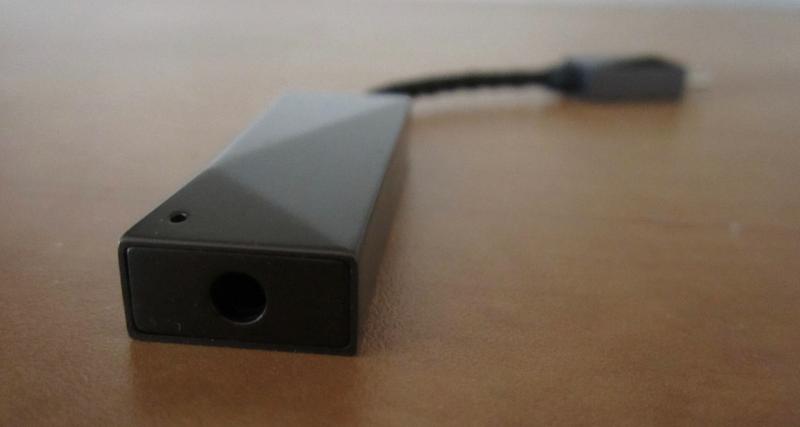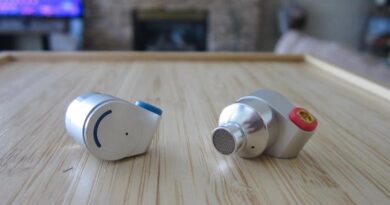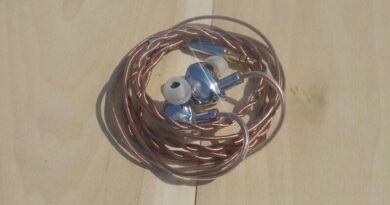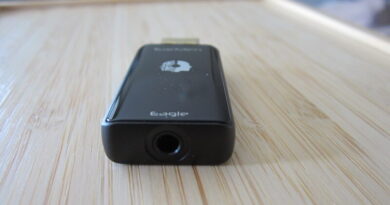Astell & Kern PEE51 USB-C Dual DAC Cable Review – Articulation
Pros — Neutralish sound with great note definition and articulation; dual chipset for optimal separation and crosstalk; full metal housing.
Cons — Sound could be more organic; relatively high output impedance; high battery drain, does not work with iOS devices; fixed cable; no basic accessories (e.g. USB-C to USB-A adapter).
In this Article
Executive Summary
The Astell & Kern PEE51 is a dual-chip dongle dac that excels through its articulation, but its high current drain limits its portability.
Introduction
Ever since Gordon Rankin invented the phone-compatible dongle dac back in 2016 that turned even the cheapest phone into a decent digital audio player, many companies have jumped onto this bandwagon. Rankin’s original idea was a small device in the shape of a USB thumb drive without its own battery that was powered by its source, be it a phone or a computer.
The benefit was obviously both improved sound quality and increased output power. Downside of these early dongles was lack of compatibility with current-hungry, low-impedance headphones/earphones.
In recent years, phones as well as their batteries have grown in size and capacity so that most newer “dongles” draw more current, which works better with low-sensitivity iems and “bigger” headphones. This also benefits computer users, who are more concerned with amplification power than battery drain.
A big problem remains, however, in that Apple limits their devices’ current draw to 100 mA to protect battery life, which creates an incompatibility with many modern dongles.
Astell & Kern, a renowned Korean manufacturer of premium digital analog players, address music lovers with their PEE51 dongle that do not wish to carry a second device (a “dap”) in their pocket. And they decided on a technology that relies on high current draw, which does not work with Apple devices.
Specifications
| DAC | Two Cirrus Logic CS43198 |
| Sample Rate | PCM: support up to 32 bit/384 kHz / DSD native: DSD64 (1 bit 2.8 Mhz), stereo / DSD128 (1 bit 2.8 Mhz), stereo / DSD256 (1 bit 11.2 Mhz), stereo |
| Input | USB-C (Android, Windows, Mac OS) |
| Output | 3.5 mm headphone |
| Output Impedance | 2 ohm |
| Frequency Response | 0.030 (condition: 20 – 20,0000 Hz) |
| S/N Ratio | 118 dB @ 1 kHz unbalanced |
| THD+N | 0.0004 % @ 1 kHz |
| IMD SMPTE | 0.0003 % 800 Hz (4.1) unbalanced |
| Output Power | 2 Vrms (without load) |
| Product Page: | Astell & Kern |
Physical Things
In the box is just the dongle. Its housing and that of the the USB-C connector are made of solid metal. The braided, silver-plated, copper-shielded cable is fixed and can therefore not be exchanged/replaced. The overall haptic is very robust. The dac features a dual chipset for improved separation and crosstalk. What is not included is an adapter for connecting to a standard USB-A socket.


Functionality, Operation, Compatibility
The PEE51 does…
- work with Windows/Mac computers or Android sources with computer and Android phone
- consume a lot of battery
The PEE51 does not…
- contain a battery and draws its current from the source
- contain onboard controls…is operated from the source
- work with iOS devices
- connect to the standard USB USB-A socket (needs adapter)
- work well with 300 ohm headphones
- work well with sensitive earphones <16 ohm
The Astell & Kern PEE51 is operated from the source. A white LED on top of the case near the 3.5 mm headphone socket indicates its activity. The dongle is compatible with Windows and Mac computers, and most Android devices, but not with iOS devices. You find compatibility details on the product page.
Amplification and Power Consumption
As explained above, there are principally two end members of dongles. Such that draw little current and such that draw…erm…much. Both have their pros and cons. Little draw means limited power and sound quality but battery preservation. Good for the road. The AudioQuest DragonFlys are classic examples.
If output power has highest priority for you, go for the “battery hogs”. Better for home, ok with big Android-phone batteries. I had addressed the issue in this tech article. The Astell & Kern belongs principally to this group as it draws >100 mA. This explains the PEE51’s incompatiliby with iPhones and iPads.
But not all of the PEE551’s current goes into perceived amplification power. The 2 Vrms output power (without load) is rather average in this dongle class. Adding the relatively large output impedance of 2 ohm (the competition is <1 ohm) and the necessity to power a dual chipset make the PEE51 play quieter than other 2 Vrms dongles in my testing. It also experienced its limit when driving the 300 ohm Sennheiser headphones. It principally worked but lacked the “bite” of more powerful devices such as the Apogee Groove.
The 2 ohm output impedance may add hiss to iems with an impedance below 16 ohm (“1/8 rule”).
1/8 Rule: output impedance should not exceed 1/8th of the nominal impedance of the headphones.
Sound
Equipment used: Macbook Air + Sennheiser HD 600 | JVC HA-FDX1 | Final Audio E3000
The Astell & Kern PEE51 is a near-neutral, marginally warm dongle. It is fairly linear with a minimally boosted and rather dry and crisp bass. Midrange is clear and transparent. Vocals have a crisp attack without sharpness or grain, and they are a bit back. With the problematic HD 600, it lacks treble extension.
What makes the PEE51 stick out of the broad body of midprice dongles is its good articulation and note definition, which carries the handwriting of the dual chipset (that should improve separation and crosstalk).
The stage as a decent depth but only average width. I find the PEE51 deserves a bit more air and more ease, it always appears to work hard. Timbre is acceptable but not as organic as the DragonFly Cobalt’s (at twice the price). I also have to run the PEE51 at rather high volumes compared to the other dongles used.
Since any battery-less dongle is of limited sound quality, and considering the market being flooded with $100-200 devices, the PEE51 is sonically best characterized through comparisons with the competition.
Spoiler alert: these differences are only nuances. These dongles are rather close together.
The $129 EarMen Eagle sounds warmer through more bass, and more organic, and has a flatter and wider image. It has more air but lags in midrange articulation. Vocals are more intimate in the Eagle and it plays louder.
The $100 Earstudio HUD 100 MkII on high gain works much better with the Sennheiser HD 600. It has way more power and pizazz, and offers a bigger headroom. With iems on low gain, the HUD100 shows a different face as it does not have the PEE51’s crispness in the attack – and also not its depth. But it also plays louder.
The $104 Hidizs S9 Pro similar in neutrality to the PEE51, but is fuzzier in the bass and and not as resolving in the midrange. It offers a second, balanced, more powerful circuit (which I did not test in this comparison).
In terms of applicability, the HUD 100 is the most versatile as it works with all devices and even 300 ohm headphones well. The Eagle has the smallest power draw and therefore works best with iOS devices. The S9 Pro works will all, although it has a very high power draw – and is technically the worst imo. The Astell & Kern PEE51 is the technically best but has limited applications. Pick your poison.
Concluding Remarks
The Astell & Kern PEE51 is a quality dongle from a well respected manufacturer. It fits value wise and performance wise into the broad body of midprice dongles. Since none of these is perfect and suited for all applications, the listener has the torment of choice, which one to pick.
The PEE51 is optimized for hi res listening best with an android phone (with a huge battery) or a computer.
Until next time…keep on listening!

Disclaimer
This loaner of the Astell & Kern PEE51 was provided by the company – and had been returned at the time of publication of this article.
Our generic standard disclaimer.
You find an INDEX of our most relevant technical articles HERE.







